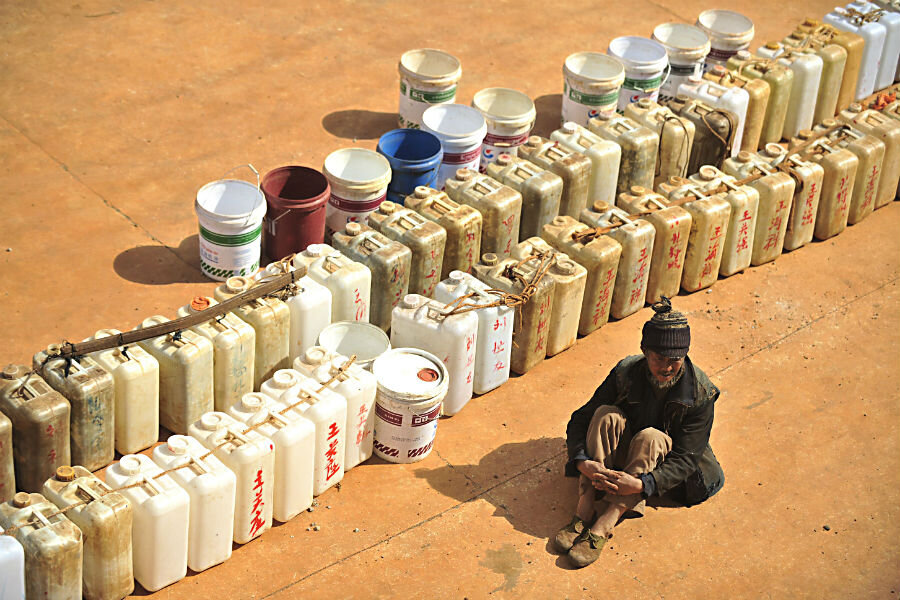India and China will suffer severe water stress by 2050, says study
Loading...
Parts of Asia are likely to suffer severe water stress by the middle of this century, according to a new study by scientists at the Massachusetts Institute of Technology (MIT).
The study, published Wednesday in the journal PLOS One, considered major developing nations – notably India and China – and modeled their water-use trajectories if no action is taken to restrain either growth or anthropogenic climate change.
Under such circumstances, the researchers found that both countries had a roughly one-in-three chance of entering a "water-stressed phase," defined as one in which water usage exceeds surface-water supplies.
“This is not simply a case of saying that climate change is going to affect everything adversely everywhere,” says co-author Adam Schlosser, deputy director at MIT's Joint Program on the Science and Policy of Global Change, in a telephone interview with The Christian Science Monitor.
“There is a whole range of plausible outcomes, and when we think about water resources, it has to do with human demands as well as climate change.”
Specifically, the researchers looked at four key variables: population growth, economic expansion, natural climate fluctuations, and carbon emissions from human activity.
They then made predictions about the impact of economic expansion and population growth alone, human-induced climate change alone, and then both together, focusing on how these factors affected water stress.
As defined by the European Environment Agency, "water stress occurs when the demand for water exceeds the available amount during a certain period or when poor quality restricts its use. Water stress causes deterioration of freshwater resources in terms of quantity and quality."
While natural phenomena such as drought can certainly cause water stress, says Dr. Schlosser, unrestrained economic growth and the ballooning emissions that accompany it have "very direct effects on water demand."
Most people think of fresh water as endlessly available, but when demand consistently outstrips supply, aquifers – nature's underground water-storage tanks – can become completely drained.
"When you look at emerging economies such as India and China, this puts them into a category of water-stress that’s unsustainable, one might even argue unacceptable,” says the professor. “It’s a place you really don’t want to be in – withdrawing water at a rate where supply cannot be replenished.”
To illustrate the plausible scenarios going forward, the researchers created two probability wheels – one for India, one for China.
Now imagine spinning these like in a game of Twister or roulette. In these depictions, the green segment represents the likelihood of naturally occurring water stress.
But a far bigger portion, colored varying shades of red, represent scenarios where the countries fall into unsustainable levels of water stress attributable to unconstrained growth and emissions.
“In India and China, 33 percent of all scenarios move towards this unsustainable scenario,” says Schlosser. “Even where they are now is very close to this unsustainable scenario, when you think of each nation as a whole.”
Schlosser and his colleagues did not present solutions for how we might mitigate these effects, or even adapt to them, but they have begun looking for them – considering what efforts could diminish the risk of the most dangerous climate change outcomes.
They also hope to expand their study area to include the United States, where far more data is available, perhaps leading to an even richer view of what may lie ahead.
"This study is trying to underscore the current water stress situations," says Schlosser. “At what point are we willing to say, 'We need to change,' 'We need to mitigate these risks?' "







